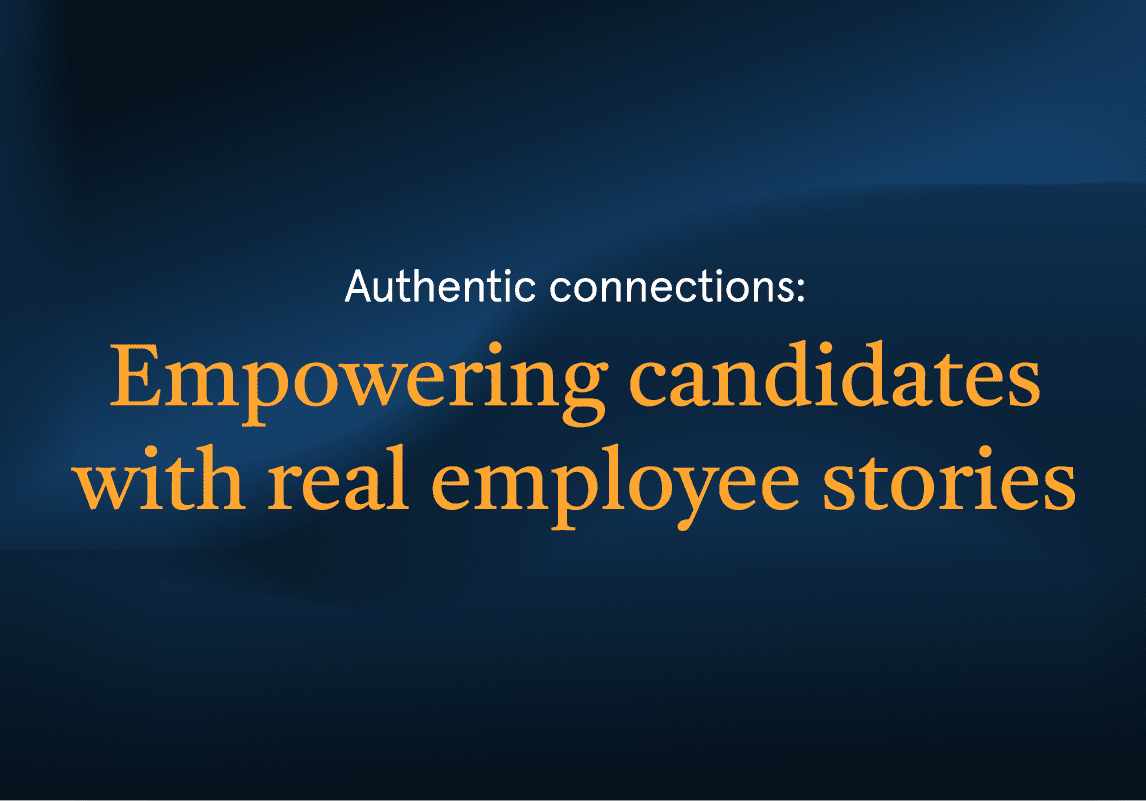Today’s job-seekers are more empowered than ever. With rising vacancies and a slowing economy, it’s crucial for employers that want to attract top talent to understand and address candidates’ questions and concerns —long before they begin the application process.
What can recruiters and talent acquisition teams do in this uncertain economy to recruit the best candidates? The answer is simple: make sure you understand what candidates really want in the changing job market. With this knowledge, you’ll be able to seamlessly answer their call —to be the employer with a captivating brand, the ability to encourage their career growth, and the capacity to retain them as employees long-term.
Here are three key strategies that ensure candidate satisfaction and retention.
1. Agility
SHRM defines an agile organization as one whose workforce “… swiftly adapt(s) to the changing needs of customers, employees and the marketplace.” SHRM identifies the five trademarks of an agile organization:
- Strategy: The company mission is incorporated across the organization
- Structure: A network of quality teams in place to collaborate and problem solve
- Process: Swift decisions followed by comprehensive learning cycles
- People: Dynamic individuals who are passionate about their work
- Technology: The organization employs top of the line technology and automation
Implementing an agile approach is paramount in a rapidly changing economy —especially when it comes to managing your recruitment efforts. According to Recruitee, developing an agile process is key. This process allows your team to work in sprint intervals, ensuring time for reflection and learning while still advancing the project forward. Allocating time for feedback between all members of the project streamlines operations across the business. In turn, the risk of communication breakdowns between stakeholders is reduced.
In order to cultivate a team capable of producing and utilizing agile processes, approach hiring with a growth mindset. In doing so, you create a flexible and dynamic team, with a diverse set of skills at your disposal. By hiring the right group of people who can weather the storm with you, you’ll be able to pivot as needed and expand the possibility for cross training and collaboration.
For example, an agile team focuses less on current business needs and fixed planning. Instead, they shift the focus to talent trends and predictive talent analysis. This allows the talent team to become subject matter experts and specialize in particular operations or talent segments.
2. Automation
Many talent acquisition teams mistakenly believe that successful recruitment involves intensive manual data entry. Tracking your talent pipelines should be streamlined using tools to automate and reduce manual work. Automation minimizes chances for human error and reduces the risk of missed steps.
For example, Equinix, a digital infrastructure company with over 220 data centers and ten thousand employees globally, recognized a need for better automation and tech capabilities to meet the demands of their growing business. After implementing Clinch and utilizing proactive recruitment methods, they were able to better track candidate activity and send automated personalized messages to candidates with incomplete applications.
Your team should be leveraging automation as a part of your talent strategy to deliver recruitment marketing communications that resonate with specific candidates at the right time. According to a 2022 Clinch report “…the most popular topics for candidates by industry shows that candidates in different industries want different information.” For example, candidates across the education industry put a strong emphasis on eligibility advice. Those in the engineering industry place high importance on information regarding the role itself.
To stop candidates from self-disqualifying before they even apply, customize your targeted messaging based on the role you are trying to fill. Using the same homogenous messaging for all candidates causes them to disengage from the brand because the personal connection is lost. Automation allows candidates the opportunity to ask questions right away and receive a response in real time. Empowering candidates with meaningful conversations will keep them more engaged for a longer period of time.
3. Authenticity
To hire for longevity, both the candidate and the employer must be honest and straightforward about what it is they are looking for, as well as what they bring to the table. This allows you to quickly identify who your best candidates are, and what’s important to them. Lucky for you, candidates are telling us what they want!
Rally Recruitment Marketing observes that while employers have known for a long time that employee generated content (EGC) is a superior marketing tactic, two roadblocks have traditionally hindered EGC usage:
First, a lack of understanding about what questions candidates want answered. Second, neglecting to encourage genuine, unfiltered responses from employees.
Candidates are interested in hearing from real people and sharing their honest opinions. Topics like career progression (up 103%) are more top of mind for candidates, whereas career advice is less of a priority (77%). Learning about the career progression of potential colleagues, their experiences, struggles, and relevant expertise helps solidify a candidate’s interest in your organization. It sets the stage for what their own career narrative could look like.
It’s stories that resonate with candidates. A recent Clinch study tells us that candidates engage at a higher rate (18%) with employee stories than with standard career site content. Give candidates authenticity and transparency throughout the engagement journey by encouraging current employees to share their advice and experiences. Doing so is in your best interest as an employer. In recent research, Lori Sylvia, Founder of Rally, finds content that showcases career progression and training opportunities is out-performing more traditional career site content.
Kathryn Minshew from The Muse notes that candidates’ priorities and behaviors are changing. She offers practical advice on how to ensure more meaningful interactions. Instead of focusing on traditional marketing techniques — such as a robust career site — shift to more employee-produced videos and images. This growth in employee generated content will satisfy a jobseeker’s desire to understand company culture in a more authentic way.
What’s next?
There is no one size fits all method to candidate engagement. With a slowing economy, and a growing number of jobseekers who value feeling connected to the company mission, successful recruitment requires rethinking and expanding your approach.
Utilize an agile methodology to recruit and retain flexible people with multi-faceted skill sets. Deploy automation tools to engage top candidates with personalized messaging, then track and nurture them throughout your talent pipeline. Prioritize authenticity in your marketing approach, by leaning into employee testimonials and advice.
Once you’ve identified your ideal candidate, understand what it will take for them to trust and believe in your company. You need to convince your career site visitors that you’re the employer best suited to carry them into the next phase of their career.
Learn what your dream candidate wants to know by downloading our What candidates really want to know in 2022 report today.



